-
Swedish police arrest man for building nuclear reactor in his kitchen
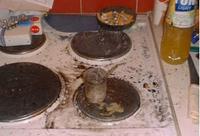
A 31-year old Swede was arrested after ahothorities discovered he was preparing to build a nuclear reactor in his apartment’s kitchen; he already had some radioactive material — ordered from overseas — and material acquired by taking apart a domestic fire alarm; he was discovered when he called the Swedish Radiation Authority to inquire whether it was legal to construct a nuclear reactor at home
-
-
U.S. General: troops unprepared for nuke risks in Japan
A U.S. general admitted that U.S. troops stationed in Japan did not have the proper training or equipment to handle radiation exposure in the days immediately following the nuclear crisis at the Fukushima Daiichi power plant caused by the 11 March earthquake and tsunami
-
-
Blue ribbon commission calls for interim off site waste storage

After deciding to stop the Yucca Mountain nuclear waste repository project, President Obama appointed a blue Ribbon commission to examine alternatives; the first report from the commission calls for interim storage of nuclear waste not on the site of nuclear power plants, and for the creation of a new corporation to develop one or more deep geological repositories “as expeditiously as possible”
-
-
Another Iranian nuclear scientist killed in Tehran
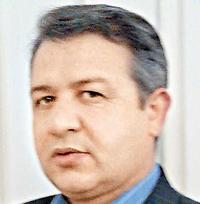
On Saturday, Darioush Rezaei, a 35-year-old physics professor involved in Iran’s nuclear program, was killed outside is Tehran home by assailants on a motorcycle; Rezaei’s expertise — neutron transport — is at the heart of nuclear chain reactions in reactors and bombs; Rezaei joins an ever-growing list of Iranian nuclear scientists who have met an untimely death at the hands of mysterious assailants; the systematic, covert killing of nuclear scientists to prevent a country from building a bomb is a method Israel used successfully — if, at times, with collateral damage — against Egypt in the early 1960s and against Iraq in the 1980s; the precision and lethality of the current Israeli campaign against Iran’s nuclear weapons scientists shows Israel learned important operational lessons from those two campaigns
-
-
A first: China connects fast-neutron reactor to the grid
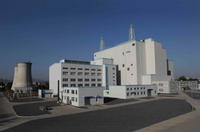
Fast-neutron reactors use uranium sixty times more efficiently than a normal reactor; if adopted, the reactors would make current uranium reserves go longer; the reactor design also minimizes radioactive waste from nuclear energy; China is the first country to connect a fast-neutron reactor to its grid
-
-
Japan halts shipments of radioactive beef
The Japanese government is coming under fire for only halting shipments of contaminated cattle now, four months after the 11 March earthquake and tsunami that led to the nuclear crisis at the Fukushima Daiichi atomic energy station; authorities recently discovered that 637 cattle had been fed hay contaminated with radioactive cesium and then shipped from farms in northern prefectures including Fukushima
-
-
Virginia powerplant holds nuke disaster simulation
On Tuesday, nuclear plant officials and emergency responders recently participated in an exercise to simulate an accident at the Surry atomic power plant in Virginia; Dominion Virginia Power, which operates the state’s four nuclear reactors, regularly holds exercises like these at the Surry plant, but following Japan’s nuclear disaster, the exercises have become even more important
-
-
Japan's prime minister pushes to end nuke program
Japan could soon be following in the footsteps of Germany and shut down its nuclear energy plants; at a televised press conference on Wednesday, Prime Minister Naota Kan pushed to end Japan’s nuclear program; “Japan should aim for a society that does not depend on nuclear energy,” Kan said
-
-
U.K. awards 160 million Pound nuclear decommissioning contracts
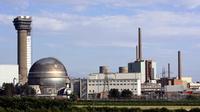
The decommissioning of one of U.K. oldest nuclear plants — Sellafield, located close to the village of Seascale on the coast of the Irish Sea in Cumbria, England — has taken a giant step forward thanks to the awarding of three waste retrieval contracts worth more than 160 million Pounds
-
-
Nuclear safety journal launched
Three Mile Island, Chernobyl, Fukushima: for the third time in twenty-five years a nuclear power plant suffered a serious accident, precipitating a global review of the way to govern nuclear safety and security; a publisher of scientific journal is launching a new journal — International Journal of Nuclear Safety and Security (IJNSS) — which will offer a forum for the serious discussion of nuclear power plants’ safety
-
-
45 percent of children in Fukushima exposed to thyroid radiation

A survey revealed that 45 percent of children living near the Fukushima Daiichi nuclear power plant have been exposed to thyroid radiation; following the nuclear disaster and the revelation that radiation was leaking from reactor no. 1, researchers tested more than 1,000 children from newborns to age fifteen in the Fukushima Prefecture; children were found to have been exposed to 0.04 microsievert per hour or less in most cases
-
-
New York governor determined to close Indian Point nuclear plant
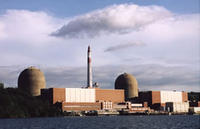
The Indian Point nuclear power plant, located thirty-five miles north of New York City, is facing increasing pressure from Governor Andrew Cuomo and senior officials say the governor is determined to shut it down; the governor’s hand has been strengthened by new legislation that streamlines the approval process for siting new power plants in New York, a move that would make it easier to replace Indian Point; closing the nuclear plant would be a major step toward reshaping the state’s energy policy as the plant produces 2,000 megawatts and provides New York City and Westchester with 25 percent of their power — but the nuclear disaster in Japan caused by the 11 March earthquake and tsunami raised fresh concerns about the plant, which is located near a fault line
-
-
Germany approves plan to shutdown nuke plants
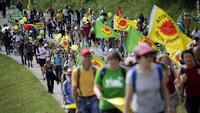
On Thursday Germany’s parliament overwhelmingly voted in favor of approving the country’s plans to end its nuclear program by 2022; Germany’s eight oldest reactors, which were closed shortly after the 11 March earthquake and tsunami in Japan, will remain off while the country’s nine other nuclear plants will be shut down in stages
-
-
Nebraska floods test a nuclear power plants new safety measures
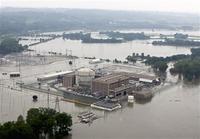
U.S. nuclear officials are closely monitoring two atomic energy plants in Nebraska that are in danger of being inundated with water as the Missouri River continues to creep ever closer; the Fort Calhoun nuclear plant has been closed for refueling since April and will remain off until the flooding subsides, but officials are worried about keeping the recently removed fuel rods cool as the facility’s parking lot has been flooded
-
-
China secures nukes ahead of major storms
Nuclear power plants along China’s coast are hardening their facilities in advance of the major typhoon storm systems that are expected to hit the country this year; the storms will create massive waves that could cause casualties and property damage; experts expect the Jiangsu and Fujian provinces to be hit the hardest in the east and the Guangdong and Hainan provinces in the south
-
- All
- Regional
- Water
- Biometrics
- Borders/Immig
- Business
- Cybersecurity
- Detection
- Disasters
- Government
- Infrastructure
- International
- Public health
- Public Safety
- Communication interoperabillity
- Emergency services
- Emergency medical services
- Fire
- First response
- IEDs
- Law Enforcement
- Law Enforcement Technology
- Military technology
- Nonlethal weapons
- Nuclear weapons
- Personal protection equipment
- Police
- Notification /alert systems
- Situational awareness
- Weapons systems
- Sci-Tech
- Sector Reports
- Surveillance
- Transportation
Advertising & Marketing: advertise@newswirepubs.com
Editorial: editor@newswirepubs.com
General: info@newswirepubs.com
2010-2011 © News Wire Publications, LLC News Wire Publications, LLC
220 Old Country Road | Suite 200 | Mineola | New York | 11501
Permissions and Policies
Editorial: editor@newswirepubs.com
General: info@newswirepubs.com
2010-2011 © News Wire Publications, LLC News Wire Publications, LLC
220 Old Country Road | Suite 200 | Mineola | New York | 11501
Permissions and Policies
